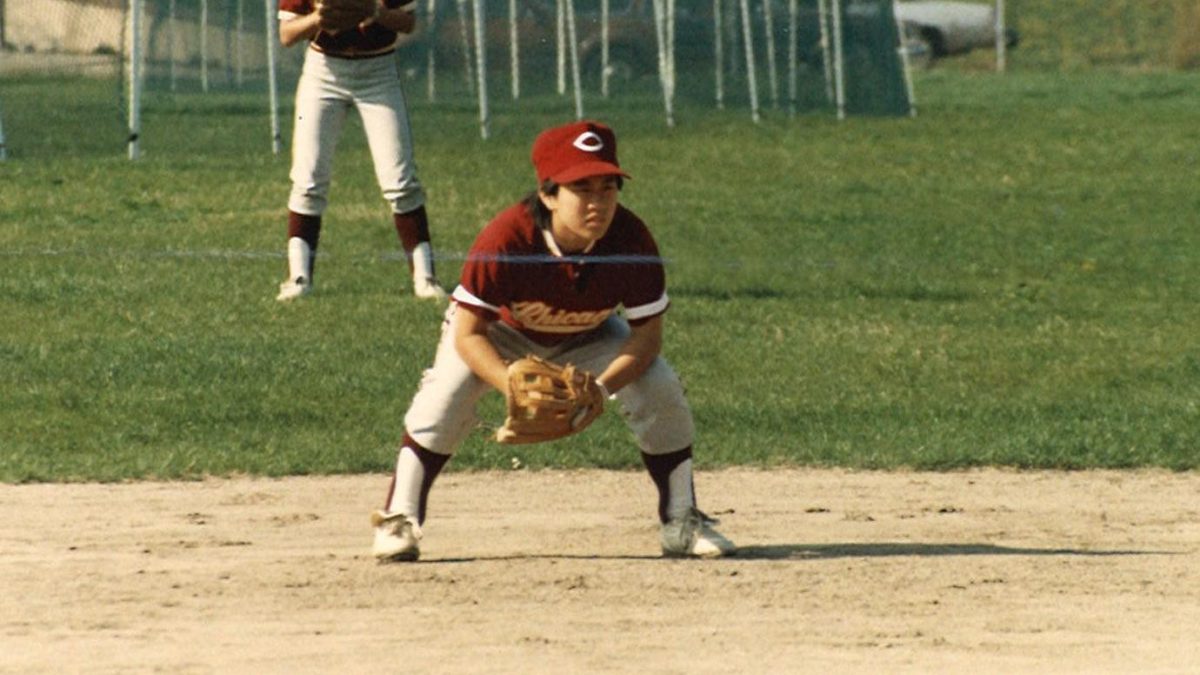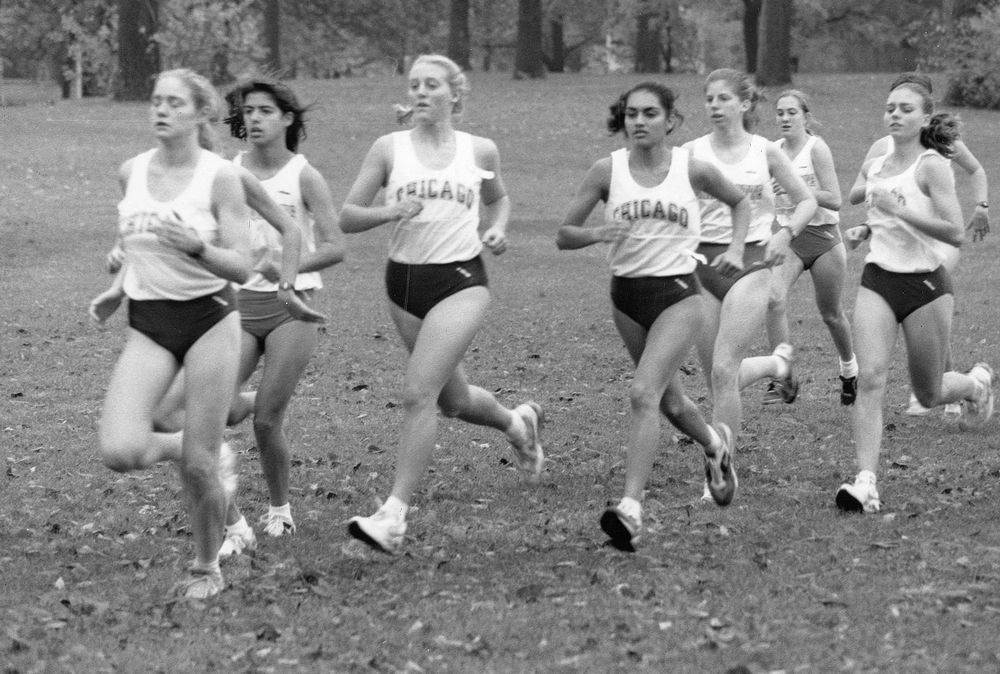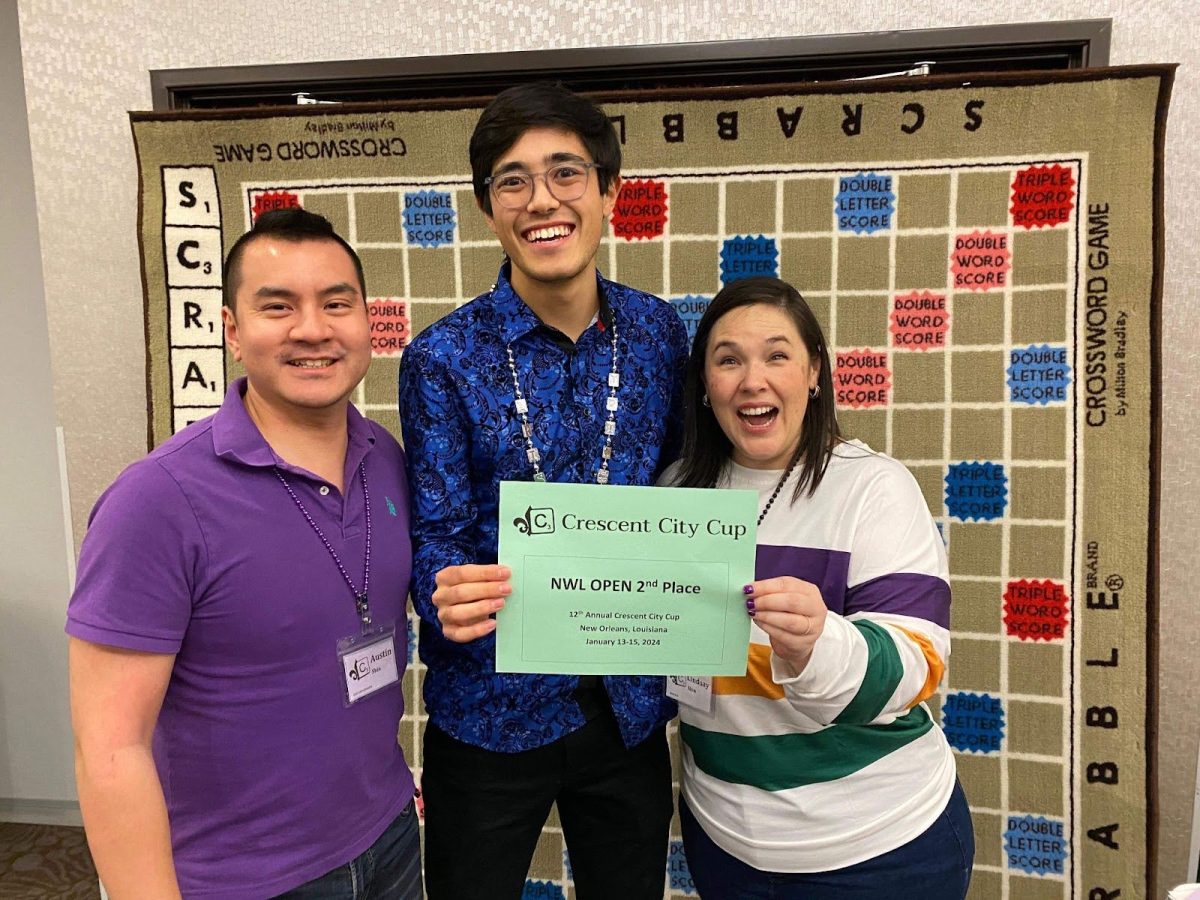There’s an astonishing detail waiting for anyone who takes the time to comb through results from track and field events at Chicago. Right above the times from the men’s 100 meters, there’s a line for the Ted Haydon Track record in that event, which hasn’t changed in 70 years and may not change for 70 more.
It reads: “10.44 1936 Jesse Owens.” That’s the same Jesse Owens who, in early August 1936, won four gold medals at the Berlin Olympics. Six weeks earlier, he was competing here, at the old Stagg Field, winning NCAA titles in four events and earning a place in U of C history.
That encapsulates everything cool about the U of C’s record books and all the history that they embody. They are a reminder of the University’s rich athletic tradition—which goes back more than 100 years, to an era when Chicago was a magnet for the nation’s top athletes—and for a few, they offer a chance to take a spot alongside Olympians, Hall of Famers, and the very best athletes the U of C has ever had.
A Day You Don’t Forget
Twelve years later, Rusty Loyd (A.B. ’98) can still, without a moment’s thought, recount the game when he broke the record. It was mid-January, 1997, and the Maroons were taking an easy win over Brandeis.
“We were ahead by quite a bit, and I got taken out of the game with about four minutes left,” Loyd said, smiling. “And I sat down next to my best friend, Dan Klock [A.B. ‘98] is his name, and I looked at him and I said, ‘Dan, I had a lot of assists today.’
“He said, ‘What do you mean?’
“And I go, ‘I felt like every time I passed the ball to someone, they made a shot.’”
Just after that, a voice came on over the P.A. Loyd had dished 17 assists in the game, the announcer told the crowd, a new UAA record.
“And I gave [Klock] the nudge and I was like, ‘Dude, I told you I had a lot of assists today,’” he said.
Loyd isn’t unusual among Chicago athletes. Whatever the record, the moment they broke it (or learned they broke it) is one that the athletes don’t seem to forget.
With Zach Rodgers (B.S. ’08), it’s plain to see why he remembers breaking the Chicago record in the decathlon. The mark had been in his sights since high school, when head coach Chris Hall told him of Jay Berwanger’s (A.B. ’36) record score, which had been untouched for nearly 70 years. The significance of an opportunity to top Berwanger, who won the original Heisman Trophy, wasn’t lost on Rodgers, and he said getting the record was a “primary goal” for him “from day one.”
Because of the time needed to adapt from the high school decathlon to the college decathlon, Rodgers had to wait for the NCAAs his third year to set the record. At that meet, with nine events down and only the 1500 meters to go, Rodgers figured he wasn’t in contention for All-American honors, but the all-time score was still within reach. Running tired, but with the thought of Berwanger to spur him on, Rodgers knew he had the record with a couple hundred meters still to go.
“Finishing a decathlon is always a great feeling—and a huge relief—but crossing the line realizing I had finally broken the school record was a great feeling,” Rodgers said, “second only to when our guys’ and girls’ teams both won the UAA Indoor conference title my senior year.”
But not all athletes have such fond remembrances to go along with their records. Second-year Andrew Wells-Qu ran one leg of the 4×400 this year, and helped set the Chicago record at UAA Indoors in March. That meet came down to the 4×400, and with Chicago, Wash U, and Emory all neck-and-neck, even the record time didn’t give the Maroons the championship.
Looking back, Wells-Qu said he was glad to have the record, but that the race’s impact on his team took precedence.
“I guess it was nice, like, ‘Oh, that’s great and all,’ but we kind of still lost the conference,” Wells-Qu said.
Get the Wins, Let the Records Follow
Prominent as the all-time marks may be in the athletes’ thoughts, coaches seem hesitant to use the record books—and the possibility of rewriting them—to motivate their teams. Hall, for one, said he doesn’t make breaking records a goal, though the historic numbers can be useful as benchmarks of someone’s progress.
Still, Hall maintains record lists for each of the track and field events, updates them following meets, and regularly sends them out to the teams. Besides a list of the best times from the current season, he keeps all-time top-10 lists and first-year top-10 lists.
If the lists can be catalysts, Hall said, the time or distance in the 10th spot might be as powerful a motivator as number one. Berwanger, for example, has been 10th on the all-time outdoor shot put list since 2005, and the throwers have been looking to bump him off ever since.
“I think they’re motivated as much by that as anybody on our team is to get the school record, because of the specifics of who [Berwanger] was,” Hall said.
Similarly, Loyd, who went on to coach basketball at Chicago and IIT, among other schools, said the team should take primacy, and individual accolades would follow from that.
“I think if your team is doing really well, you’re more likely to get assist records, you’re more likely to get rebound records,” Loyd said, “because your team is playing well and when your team is playing well, you just end up having more stats.”
And Loyd’s playing career at Chicago can serve as an example of the difficulty in chasing individual records while playing a team sport, where any one player’s success is intimately tied to his team’s circumstances. Because the Maroons had a down season the year before he arrived, Loyd got significant playing time even as a first-year, which might not be the case for a talented player matriculating at a strong program. Loyd was also lucky enough to play alongside three other 1000-point scorers—a rarity, especially in D III—all of which helps explain why he had 484 career assists, a school record, and a full 160 more than his closest competitor.
The Trouble with Choosing the Best
Records may be straight numbers, but compiling them is, at best, an inexact science. Though the trend during the sabermetric era of athletics has been toward more statistics that give greater detail, there wasn’t always such emphasis on stat-keeping. There are relatively scant records from Amos Alonzo Stagg’s tenure as Chicago’s baseball, football, and track and field coach, a period during which the University was a national power in several sports. It’s impossible to say what sort of accomplishments may have gone unrecorded during that time, and have since been forgotten.
(A similar caveat has to be added to Loyd’s assist records: The NCAA only began keeping assist numbers in the late 1980s.)
More recently, Chicago’s track and field teams had some outstanding performers under head coach Ted Haydon, who helmed the program from 1950 to 1975 and moonlighted as an Olympic coach. After Haydon’s death in 1985, his files remained in Bartlett, and Hall suspects they were lost when the old gymnasium was renovated into a cafeteria.
Hall has looked through archival materials to compile all-time lists that go back as far as 1905, and though he is confident that he has the number-one times right, he acknowledges there are likely imperfections further down the list.
Even when the numbers are available, comparing across eras assumes a level of continuity in the sports that probably doesn’t exist. Technology, training methods, coaching staffs, and institutional emphases on athletics all change over time, and the games are likely to change with them. That is part of the reason why football, for instance, splits its records into those from the “early era,” and those from the “modern era.”
“Football style has changed so much over the years that it makes perfect sense to have old records that are impressive for their era, and modern records that reflect the revolution of the forward pass and wide-open offenses,” football head coach Dick Maloney said.
And then there are the sports where the old records are disappearing quickly, even now. The recent renaissance of the men’s and women’s swimming and diving teams has replaced nearly every record on their books, and numbers more than a few years old are increasingly difficult to find even on their top-10 lists.
That’s in part the work of young swimmers like first-year Tara Levens, who already owns or had a hand in eight separate Chicago records. As Levens pointed out, the point of records isn’t to hold on to them—either you set new ones, or you’ll see your old ones erased.
“The important thing about records is that they are made to be broken,” Levens said, “so hopefully mine don’t stand for too long!”









